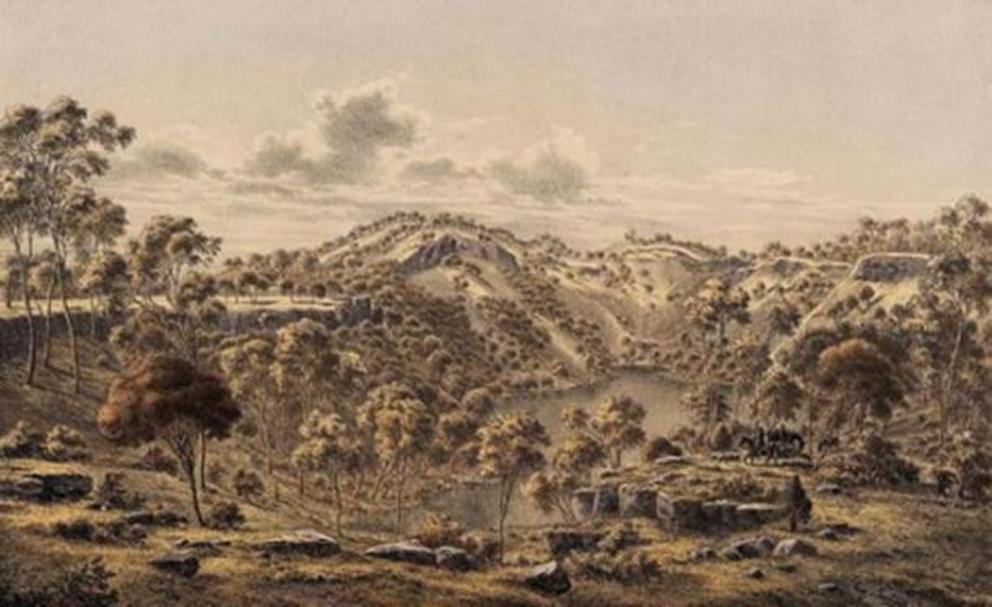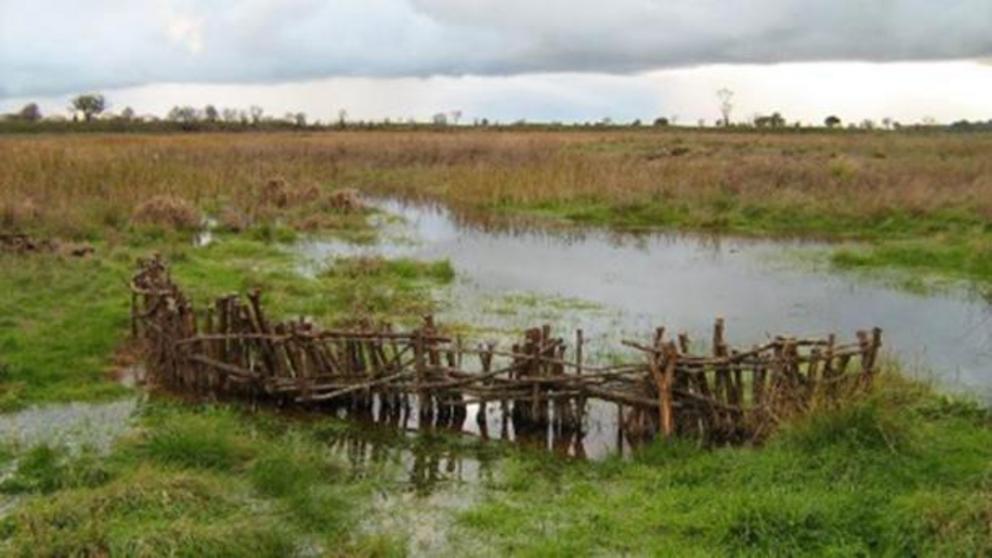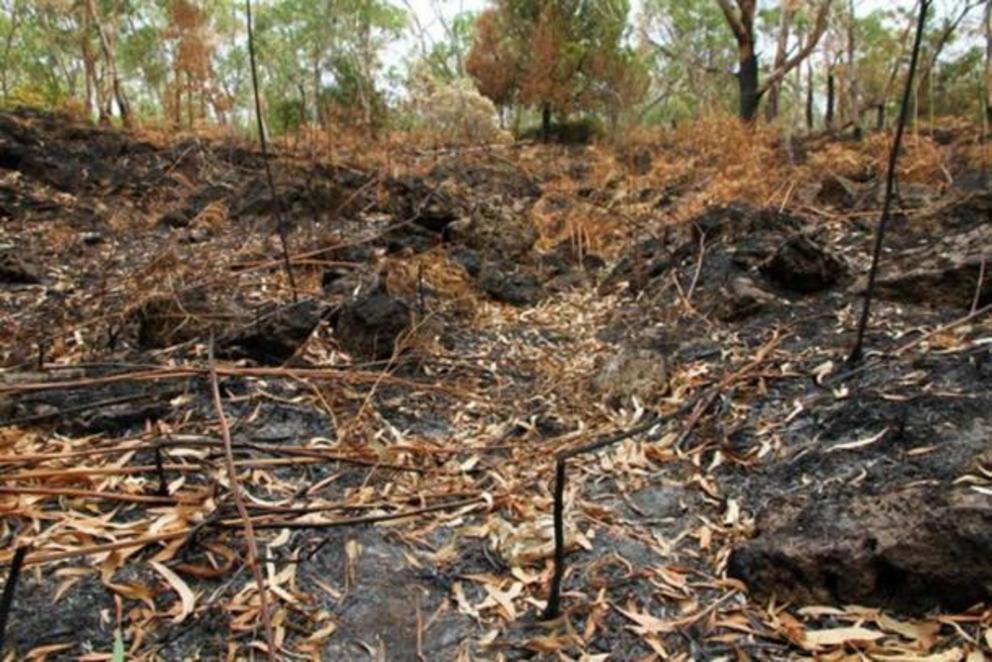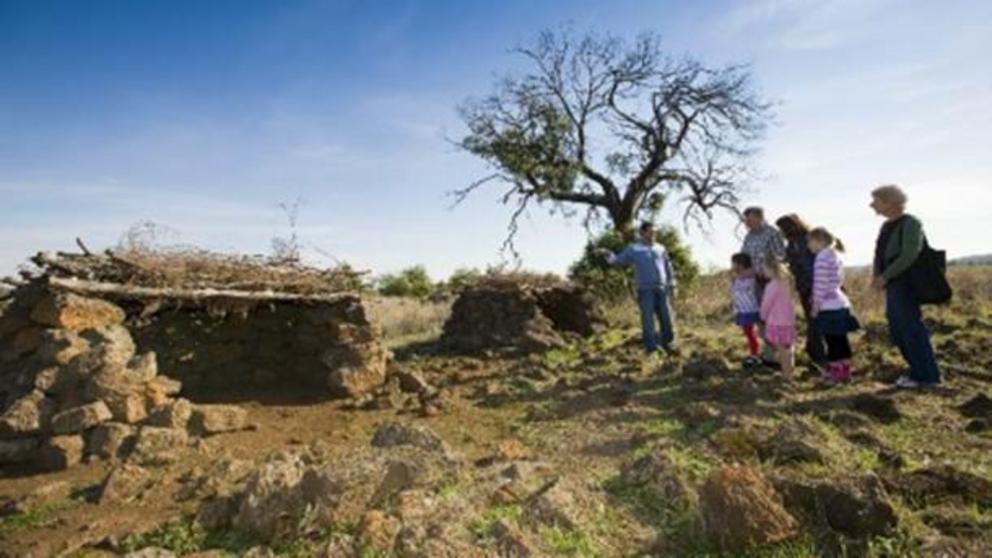Fires reveal more of the 6,000-year-old Budj Bim site
Fire services fought to save the Budj Bim site after it was added to the UNESCO World Heritage List.
UNESCO has given a 6,000-year-old Aboriginal cultural landscape called the Budj Bim archaeological site in Victoria, Australia the status of a World Heritage Site. They have acknowledged the national and the international historical significance of the aquaculture complex and settlement that dates to the Neolithic period and is older than the Egyptian pyramids. And now the fires ravaging the country have revealed even more of the fascinating site.
The status was awarded during a meeting in Baku, Azerbaijan. It is seen as a recognition of the contribution of the Aboriginal people to the history of Australia and their cultural achievements. The Australian reports that it has become “the first to earn a World Heritage listing for purely cultural reasons.”
The Budj Bim is regarded as a cultural landscape that bears traces of the sophistication of Aboriginal culture. Mercopress.Com reports that it “includes remnants of elaborate stone channels and pools built” to harvest kooyang eels. The Aborigines were able to develop a system where water with eels could be channeled from a nearby river to a low-lying area where the eels would be kept in pools of water until they were harvested.
Budj Bim: An Ingenious Eel Farm
Budj Bim is so ingenious that it only trapped mature fish and allowed younger fish to escape to pools of water so that the population could be maintained. This means that the first inhabitants of Australia created a sustainable food supply that was in harmony with nature. It is also believed to be the oldest freshwater aquaculture system in the entire world.
The aquaculture complex was first constructed by the ancestors of the Gunditjmara people who have lived in the area for thousands of years. They engineered the landscape to enable them to live a sedentary lifestyle.
 Crater of Mount Eccles (Budj Bim, Victoria) in the 1860s.
Crater of Mount Eccles (Budj Bim, Victoria) in the 1860s.
Their ‘’elaborate system of weirs, dams, and channels connects the Budj Bim Volcano and Lake Condah to the wetland marshes of the Tyrendarra lava flow that stretch to the sea’’ reports Daily Mail . Studies show that this site is dated from 6,000 years ago and is, therefore, older than the great civilizations of Egypt, Troy, Greece, and even Stonehenge.
 A channel with reconstructed stake, branch and weir in the Budj Bim Cultural Landscape.
A channel with reconstructed stake, branch and weir in the Budj Bim Cultural Landscape.
Budj Bim weirs (low head dams), channels, and dams, are built with hundreds of tons of local basalt rocks. This would indicate that the ancient people who built this remarkable structure had a complex social system. Moreover, the ability to move large blocks of basalt and dig channels indicates that they had a degree of engineering knowledge.
Bigger than Expected
As fires ravaged the area in December it was revealed that the water channel system is even bigger than previously believed . CNN reports that Gunditjmara representative Denis Rose, project manager at non-profit group Gunditj Mirring Traditional Owners Aboriginal Corporation, told them:
“When we returned to the area, we found a channel hidden in the grass and other vegetation. It was about 25 meters (82 feet) in length, which was a fairly substantial size. Over the next few weeks, we are hoping to conduct a comprehensive cultural heritage survey to check areas that were not previously recorded. It's important because it provided a rich, sustainable life for the traditional people, and has continued to be an important part of our cultural life.”
 This burnt section of bush near Lake Condah, part of the Budj Bim Cultural Landscape, is believed to be a previously-undocumented channel that forms part of the ancient eel-harvesting system.
This burnt section of bush near Lake Condah, part of the Budj Bim Cultural Landscape, is believed to be a previously-undocumented channel that forms part of the ancient eel-harvesting system.
Rose also told ABC that he wasn’t “too concerned” about the impact the fire would have on the site:
“There have certainly been many fires here in the thousands of years prior. Our major concern was the effect after the fire and we've still got some work to do there. We were concerned about the trees … particularly those taller trees that are growing in and around some of those fish trap systems and also our associated stone house sites, of [the trees] being weakened and damaged and potentially falling over and the roots upending some of these ancient stone structures.”
Was Budj Bim the First Aboriginal Settlement?
Archaeologists have found evidence that there was a village adjacent to the aquaculture complex. A large number of basalt blocks that measure up to 12 feet (4 meters) long appear to be the foundations of stone-built houses. This village is believed to be only known permanent settlement built by the Aborigines.
It seems that the eels could be harvested all year round, and this sustained a decent-sized local community. The eel farm was central to the local population for thousands of years.
 Touring the Budj Bim cultural landscape.
Touring the Budj Bim cultural landscape.
Evidence for a permanent settlement is very important. It contradicts many of the stereotypes about Aboriginal society. They have inhabited Australia for over 50,000 years and for a long time it was believed that they never developed ‘a civilized way of living’. Even today, the Aboriginal community still faces’ discrimination in many areas and typically has poorer economic, social, and health outcomes than other Australians.
The aquaculture site was used by Aborigines for millennia. However, it seems to have been abandoned by the time that the Europeans arrived in the region. When Australia's Chief Protector of Aborigines, George Augustus Robinson, examined the site in the 1840s he was amazed that it could have been built by the Gunditjmara.
He is quoted by the Daily Mail as stating that the aquaculture site resembled “the work of civilized man but which on inspection I found to be the work of the Aboriginal natives, purposefully constructed for catching eels."
Recognition of Aboriginal Culture
Drainage works in the late 19th and 20th century dramatically changed the landscape. The remarkable aquaculture site was lost and forgotten until winter flooding once more revealed the impressive network of channels, weirs, and dams. In the 1970s, the archaeologist Peter Coutts mapped the area and discovered the ‘’aboriginal fish-trapping system,’’ according to the Daily Mail .
 Water begins to flow through the eel traps.
Water begins to flow through the eel traps.
The Gunditjmara community have been lobbying to have the cultural landscape recognized by UNESCO and receive protected status. France 24 quotes the Gunditjmara tribal leader Denise Lovett as stating the awarding of the status as "a very special day for our community".
It is only the 20th site in Australia to be recognized by UNESCO and only the second in the state of Victoria. Budj Bim now joins the world-famous Australian site the Great Barrier Reef on the UNESCO list.
For full references please use source link below.

